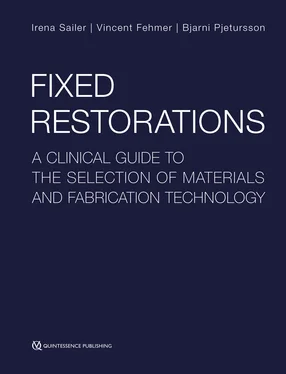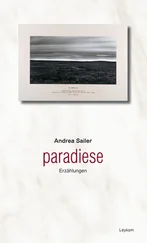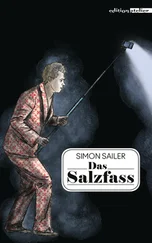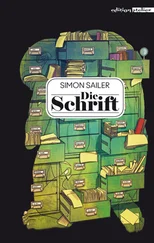11.Pjetursson BE, Bragger U, Lang NP, Zwahlen M. Comparison of survival and complication rates of tooth-supported fixed dental prostheses (FDPs) and implant-supported FDPs and single crowns (SCs). Clin Oral Implants Res 2007;18 Suppl 3:97–113.
12.Tan K, Pjetursson BE, Lang NP, Chan ES. A systematic review of the survival and complication rates of fixed partial dentures (FPDs) after an observation period of at least 5 years. Clin Oral Implants Res 2004;15:654–666.
13.Blatz MB, Vonderheide M, Conejo J. The effect of resin bonding on long-term success of high-strength ceramics. J Dent Res 2018;97:132–139.
14.Rosenstiel S, Land M. Contemporary Fixed Prosthodontics, ed 2. St Louis, MO: Mosby-Year Book, 1995.
15.Walther W. [Preparation injuries]. Zahnarztl Mitt 1984;74:2588, 2590–2582.
16.Edelhoff D, Sorensen JA. Tooth structure removal associated with various preparation designs for posterior teeth. Int J Periodontics Restorative Dent 2002;22:241–249.
17.Bedran-Russo A, Leme-Kraus AA, Vidal CMP, Teixeira EC. An overview of dental adhesive systems and the dynamic tooth-adhesive interface. Dent Clin North Am 2017;61:713–731.
18.Matei R, Popescu MR, Suciu M, Rauten AM. Clinical dental adhesive application: the influence on composite-enamel interface morphology. Rom J Morphol Embryol 2014;55:863–868.
19.Kan JY, Morimoto T, Rungcharassaeng K, Roe P, Smith DH. Gingival biotype assessment in the esthetic zone: visual versus direct measurement. Int J Periodontics Restorative Dent 2010;30:237–243.
20.Lops D, Stellini E, Sbricoli L, Cea N, Romeo E, Bressan E. Influence of abutment material on peri-implant soft tissues in anterior areas with thin gingival biotype: a multicentric prospective study. Clin Oral Implants Res 2017;28:1263–1268.
21.Jung RE, Holderegger C, Sailer I, Khraisat A, Suter A, Hammerle CH. The effect of all-ceramic and porcelain-fused-to-metal restorations on marginal peri-implant soft tissue color: a randomized controlled clinical trial. Int J Periodontics Restorative Dent 2008;28:357–365.
22.Jung RE, Sailer I, Hammerle CH, Attin T, Schmidlin P. In vitro color changes of soft tissues caused by restorative materials. Int J Periodontics Restorative Dent 2007;27:251–257.
23.Sailer I, Fehmer V, Ioannidis A, Hammerle CH, Thoma DS. Threshold value for the perception of color changes of human gingiva. Int J Periodontics Restorative Dent 2014;34:757–762.
24.Benic GI, Wolleb K, Hammerle CH, Sailer I. Effect of the color of intraradicular posts on the color of buccal gingiva: a clinical spectophotometric evaluation. Int J Periodontics Restorative Dent 2013;33:733–741.
25.Bakke M, Michler L, Moller E. Occlusal control of mandibular elevator muscles. Scand J Dent Res 1992;100:284–291.
26.Bakke M, Tuxen A, Vilmann P, Jensen BR, Vilmann A, Toft M. Ultrasound image of human masseter muscle related to bite force, electromyography, facial morphology, and occlusal factors. Scand J Dent Res 1992;100:164–171.
27.Trulsson M. Sensory and motor function of teeth and dental implants: a basis for osseoperception. Clin Exp Pharmacol Physiol 2005;32:119–122.
28.Trulsson M. Sensory-motor function of human periodontal mechanoreceptors. J Oral Rehabil 2006;33:262–273.
29.Manfredini D, Lombardo L, Siciliani G. Temporomandibular disorders and dental occlusion. A systematic review of association studies: end of an era? J Oral Rehabil 2017;44:908–923.
30.Cho HW, Dong JK, Jin TH, Oh SC, Lee HH, Lee JW. A study on the fracture strength of implant-supported restorations using milled ceramic abutments and all-ceramic crowns. Int J Prosthodont 2002;15:9–13.
31.Khraisat A, Abu-Hammad O, Al-Kayed AM, Dar-Odeh N. Stability of the implant/abutment joint in a single-tooth external-hexagon implant system: clinical and mechanical review. Clin Implant Dent Relat Res 2004;6:222–229.
32.Khraisat A, Abu-Hammad O, Dar-Odeh N, Al-Kayed AM. Abutment screw loosening and bending resistance of external hexagon implant system after lateral cyclic loading. Clin Implant Dent Relat Res 2004;6:157–164.
33.Steinebrunner L, Wolfart S, Ludwig K, Kern M. Implant-abutment interface design affects fatigue and fracture strength of implants. Clin Oral Implants Res 2008;19:1276–1284.
34.Denissen HW, Kalk W, van Waas MA, van Os JH. Occlusion for maxillary dentures opposing osseointegrated mandibular prostheses. Int J Prosthodont 1993;6:446–450.
35.Kawai Y, Murakami H, Shariati B, et al. Do traditional techniques produce better conventional complete dentures than simplified techniques? J Dent 2005;33:659–668.
36.Klineberg I, Kingston D, Murray G. The bases for using a particular occlusal design in tooth and implant-borne reconstructions and complete dentures. Clin Oral Implants Res 2007;18 Suppl 3:151–167.
37.Anderson JA, Jr. The Pankey-Mann-Schuyler philosophy of restorative dentistry: an overview. Northwest Dent 1994;73:25–29.
38.Schuyler CH. Freedom in centric. Dent Clin North Am 1969;13:681–686.
39.Schuyler CH. Equilibration of natural dentition. J Prosthet Dent 1973;30:506–509.
40.Jokstad A, Turp JC. Function. Consensus report of working group 3. Clin Oral Implants Res 2007;18 Suppl 3:189–192.
41.Koh H, Robinson PG. Occlusal adjustment for treating and preventing temporomandibular joint disorders. J Oral Rehabil 2004;31:287–292.
42.Beyron H. Occlusal relations and mastication in Australian aborigines. Acta Odontol Scand 1964;22:597–678.
43.Hodge LC, Jr., Mahan PE. A study of mandibular movement from centric occlusion to maximum intercuspation. J Prosthet Dent 1967;18:19–30.
44.Posselt U. Range of movement of the mandible. J Am Dent Assoc 1958;56:10–13.
45.Hammerle CH, Wagner D, Bragger U, et al. Threshold of tactile sensitivity perceived with dental endosseous implants and natural teeth. Clin Oral Implants Res 1995;6:83–90.
46.Keller D, Hammerle CH, Lang NP. Thresholds for tactile sensitivity perceived with dental implants remain unchanged during a healing phase of 3 months. Clin Oral Implants Res 1996;7:48–54.
CHAPTER 3
Technical factors
1.3.1 Introduction
In this chapter:
■ Conventional vs computer-aided manufacturing techniques
■ Optical factors influencing the material selection
■ Monolithic and veneered restorations
Digital technologies offer significant new opportunities in many dental and medical fields. Restorative dentistry has been one of the disciplines that has profited the most from these technological advancements in the last decade 1. Among these innovations, computer-assisted design and computer-assisted manufacturing (CAD/CAM) technologies have greatly influenced the production of provisional and definitive restorative components 1 – 3. As the technology establishes and further develops (intraoral optical scanners, cast optical scanners, virtual design software, 3D printers), new indications arise in other treatment phases of the restorative workflow. APart from the previously discussed clinical decision-making criteria, the following technical considerations play an important role for the material selection: the fabrication technology; the optical properties of the tooth/implant substrate; and the selection between purely monolithic or veneered types of restorations.
1.3.2 Conventional vs computer-aided manufacturing techniques
Computer technology is increasingly changing the way dentistry is being performed. CAD/CAM processes are transforming what were previously manual tasks into easier, faster, cheaper, and more predictable mechanized methods 3. Current industrial product development would be impossible without CAD technologies. No engineer would consider designing a prototype layering or carving a structure manually; instead a virtual environment is used, where different versions can be tried-in without increasing significantly the time invested and with no impact in the costs. Carving shapes manually has evolved into designing volumes virtually by means of dedicated software. In restorative dentistry, the wax and modeling are evolving into software and mouse-clicks. The restorative team can profit from virtual libraries from where different tooth morphologies can be selected (Exocad, Darmstadt, Germany; 3Shape; Copenhagen, Denmark; Dental Wings, Montreal, Canada; Sirona Dental, Wals, Austria). These software tools offer numerous different tooth shapes categorized according to parameters such as size, age, or patient’s phenotype. Moreover, real teeth can be used as a reference to generate tooth morphology proposals 4. These standard shapes can later be modified and adapted to individual patient situations. Working time is substantially reduced by eliminating the mechanical handwork needed for conventional waxing techniques. This allows the technician to focus solely on shapes and tooth arrangements.
Читать дальше












